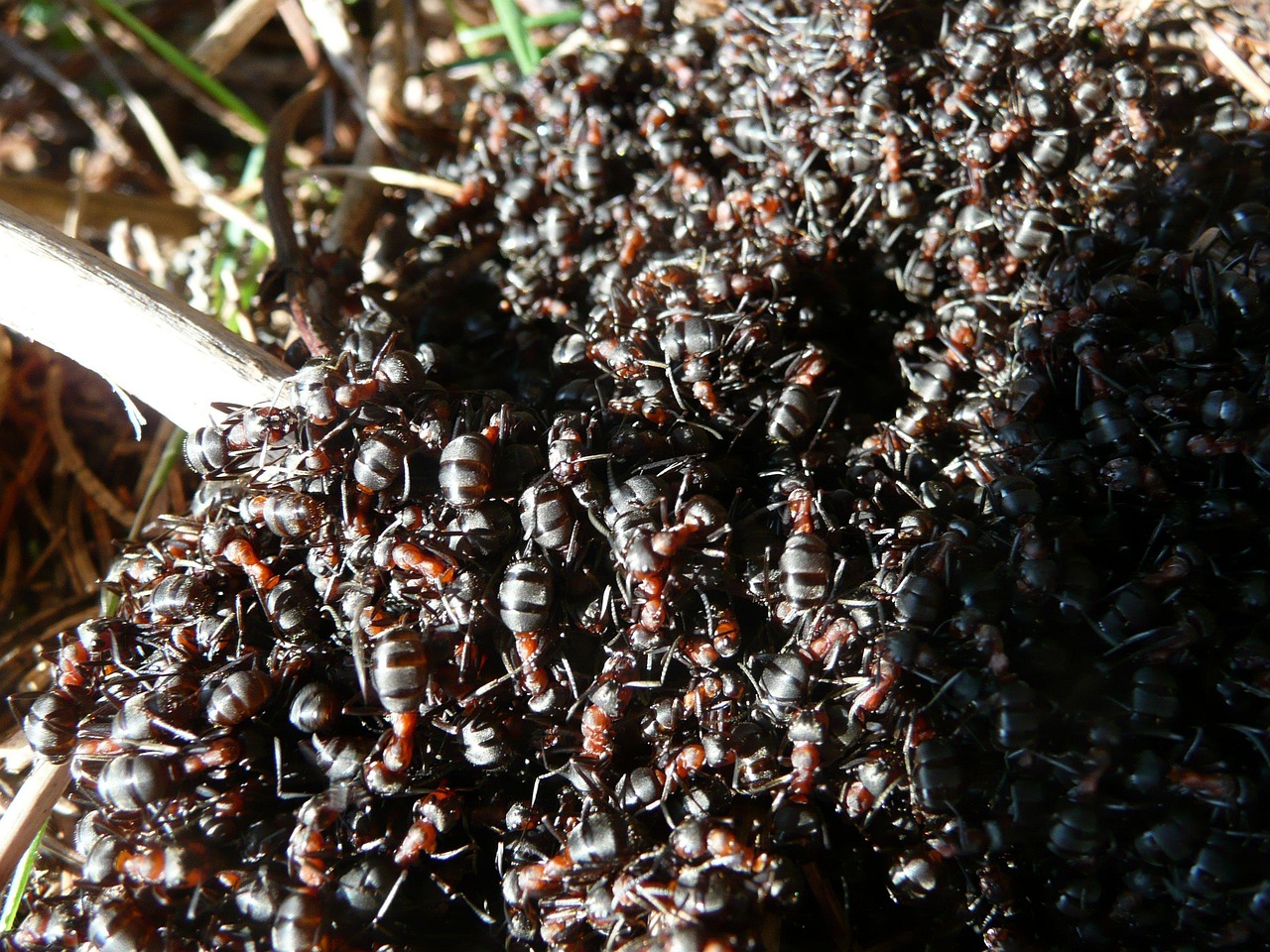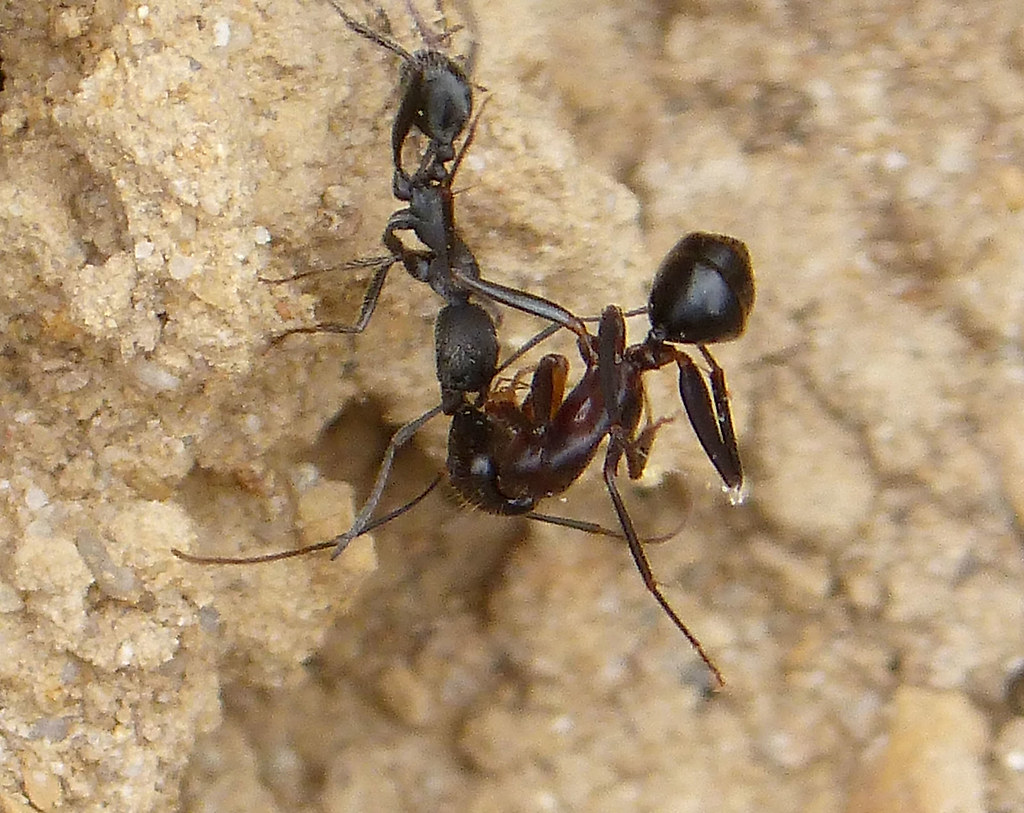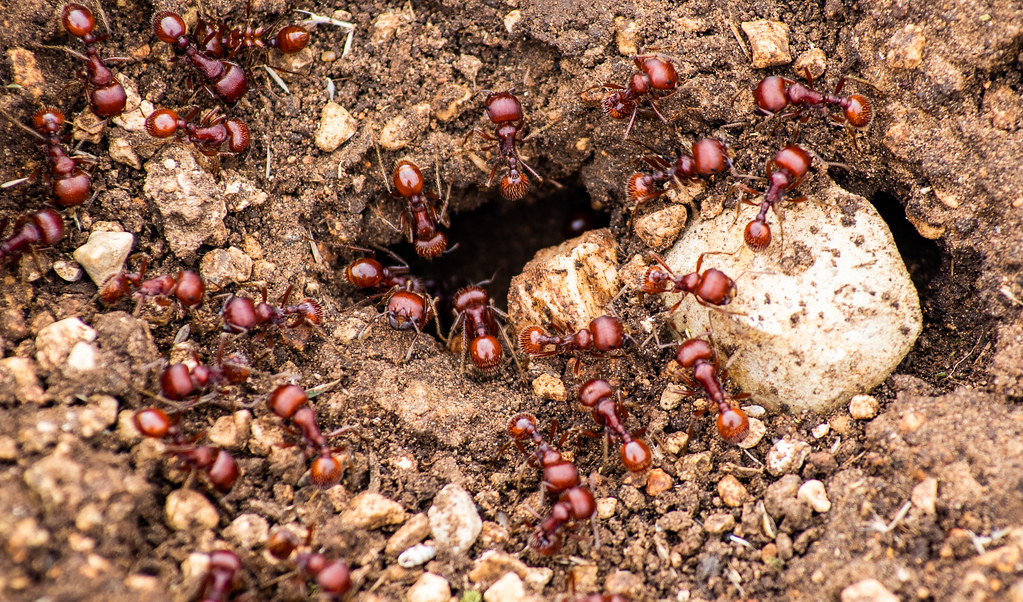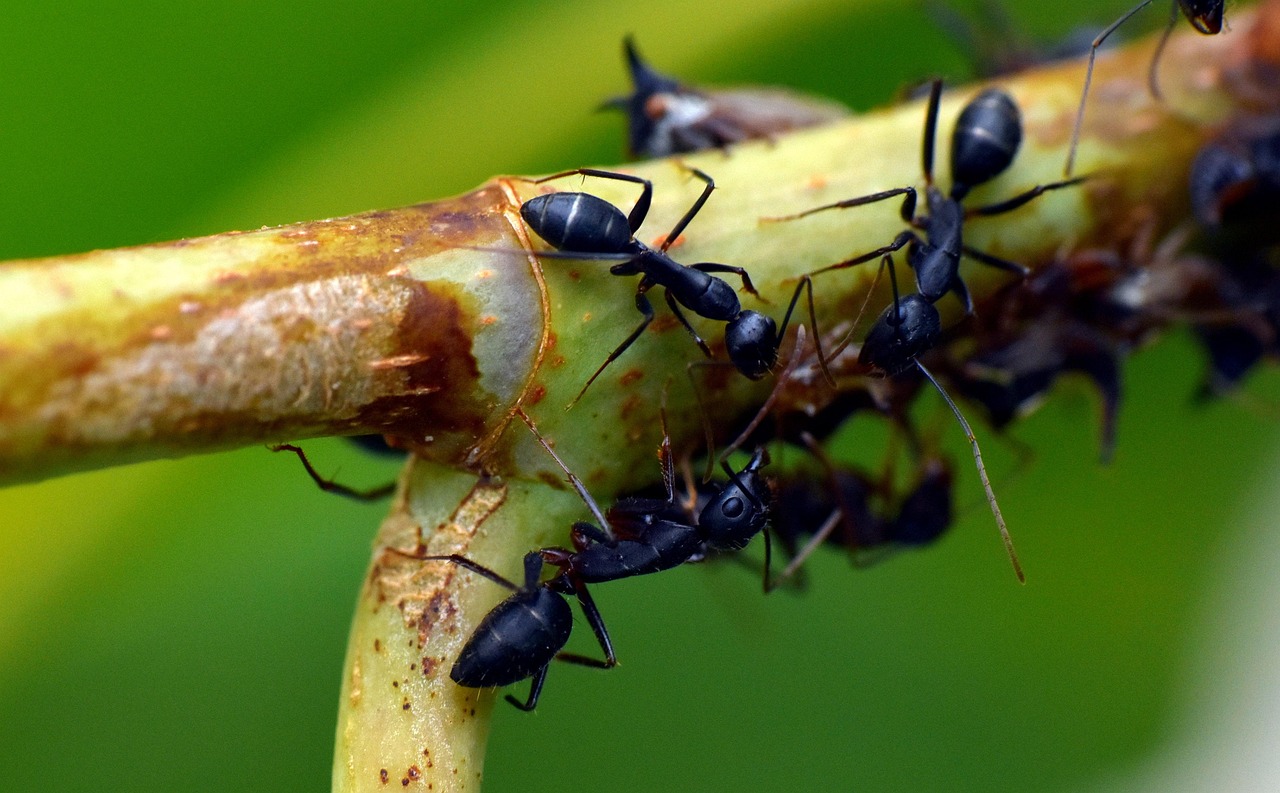Imagine walking across an entire continent and encountering the same family of ants at every step. It sounds impossible, but this mind-blowing reality exists in our world today. Some ant species have created supercolonies so vast they stretch across thousands of miles, connecting distant shores and crossing international borders. These aren’t just large colonies – they’re biological empires that challenge everything we thought we knew about territorial behavior and social organization in the animal kingdom.
The Shocking Scale of Ant Supercolonies
The largest supercolony ever documented spans over 3,700 miles along the Mediterranean coast, stretching from Italy to Spain. This massive network connects millions of individual nests into one cohesive society that operates like a single organism. Workers from nests separated by hundreds of miles recognize each other as family members and cooperate seamlessly.
To put this in perspective, imagine if all the humans living between New York and Los Angeles operated as one giant family unit. The Argentine ant supercolony in California alone contains an estimated one trillion individuals working together in perfect harmony. These numbers are so staggering that scientists initially refused to believe such organizations could exist.
The Argentine Ant Invasion That Changed Everything
The story of supercolonies begins with a tiny invader from South America. Argentine ants accidentally hitched rides on cargo ships in the early 1900s, landing on shores thousands of miles from their homeland. What happened next shocked the scientific community and forever changed our understanding of ant behavior.
Unlike their territorial cousins back home, these displaced ants did something unprecedented – they cooperated with strangers. In their native Argentina, different colonies fight fierce battles over territory. But in their new environments, separate introductions began working together, creating mega-colonies that steamrolled over native ant species.
This behavioral shift turned these modest South American ants into one of the most successful invasive species on Earth. They’ve now established supercolonies on every continent except Antarctica, creating a global network of interconnected societies.
How Supercolonies Communicate Across Vast Distances

The secret to supercolony success lies in their sophisticated communication system. These ants use chemical signals called pheromones to create invisible highways that stretch for thousands of miles. Trail networks connect distant nests like a biological internet, allowing information to flow across continents.
Workers deposit specific chemical markers that indicate everything from food sources to danger zones. This chemical language is so precise that an ant in Portugal can follow a scent trail that originated in Morocco. The pheromone system acts like a continental GPS, guiding workers to resources and coordinating massive group activities.
Recent research has revealed that supercolonies even have backup communication methods. When chemical trails fade, they use tactile signals and behavioral cues to maintain their network integrity.
The Genetics Behind Continental Cooperation
Scientists discovered that supercolony formation depends on a remarkable genetic phenomenon. All members of a supercolony share virtually identical genetic markers, making them essentially clones of each other. This genetic uniformity eliminates the territorial aggression that normally keeps ant colonies separate.
The lack of genetic diversity within supercolonies creates what researchers call “genetic bottlenecks.” When Argentine ants were introduced to new continents, only small founding populations survived. These genetic founders carried limited genetic variation, resulting in offspring that all recognized each other as relatives.
This genetic similarity acts like a biological passport system. Ants with matching genetic signatures are welcomed into any nest within the supercolony, while those with different genetic profiles are immediately identified as enemies and attacked.
The Ecological Impact of Living Empires

Supercolonies don’t just coexist with native ecosystems – they completely transform them. These biological bulldozers displace native ant species, disrupt pollination networks, and alter soil chemistry across vast regions. Their impact ripples through entire food webs, affecting everything from plant reproduction to bird nesting patterns.
In California, Argentine ant supercolonies have eliminated over 90% of native ant species in invaded areas. This loss cascades through the ecosystem, as many native plants depend on specific ant species for seed dispersal. The result is a biological domino effect that can reshape entire landscapes.
However, supercolonies also provide some unexpected benefits. They’re incredibly efficient at controlling agricultural pests, and their massive foraging networks help distribute nutrients across ecosystems. Some researchers argue that these invaders might be filling ecological niches left empty by human habitat destruction.
The War Between Supercolonies

When two supercolonies meet, the result is nothing short of spectacular warfare. The borders between different supercolonies become active battlegrounds where millions of ants engage in continuous combat. These “ant wars” can rage for decades, with casualty rates that would make human conflicts pale in comparison.
The most famous of these conflicts occurs in San Diego, where two massive Argentine ant supercolonies have been fighting for over a century. The battle line stretches for miles, with dead ants carpeting the ground in a narrow strip that researchers call the “war zone.” Neither side has gained significant ground despite deploying billions of soldiers.
These conflicts reveal the dark side of supercolony cooperation. The same genetic programming that creates harmony within colonies triggers extreme aggression toward outsiders. The result is a perpetual state of warfare that consumes enormous resources and shapes the landscape of invaded territories.
Seasonal Migrations of Entire Continents
Perhaps the most mind-boggling aspect of supercolonies is their ability to coordinate seasonal migrations across continental scales. As temperatures change and food sources shift, entire sections of supercolonies move in synchronized waves that can span thousands of miles.
During winter months, coastal populations retreat inland, while mountain colonies descend to lower elevations. These movements involve billions of individuals following chemical highways that have been established over decades. The logistics of coordinating such massive migrations without central command rivals the complexity of modern transportation systems.
Satellite imagery has revealed that these migrations create visible changes in ecosystem patterns. Vegetation growth, soil composition, and even water table levels shift in response to the movement of these living empires.
The Hidden Networks Beneath Our Feet

Supercolonies operate through underground networks that put human infrastructure to shame. These subterranean highways connect nests through a maze of tunnels that can extend for miles. The engineering feat required to maintain these networks across varying soil types and geological conditions is nothing short of remarkable.
Recent ground-penetrating radar studies have revealed that some tunnel systems reach depths of over 20 feet and maintain consistent dimensions across vast distances. These underground highways allow rapid deployment of workers to distant locations and serve as protected routes for transporting resources.
The tunnel networks also serve as climate control systems. By channeling air flow and maintaining optimal humidity levels, these underground cities create stable environments that protect the colony from extreme weather events.
How Supercolonies Process Continental-Scale Information
The information processing capabilities of supercolonies rival those of modern computer networks. With trillions of individual workers acting as biological sensors, these colonies can detect and respond to environmental changes across entire continents within days.
When a food source is discovered in one location, the information spreads through the network at remarkable speed. Within hours, workers from nests hundreds of miles away begin adjusting their foraging patterns to support the new resource exploitation. This distributed decision-making system allows supercolonies to optimize resource use across vast territories.
Scientists have discovered that supercolonies can even predict weather patterns and adjust their behavior accordingly. By monitoring subtle environmental cues across their range, these biological computers can forecast conditions days in advance and prepare their networks for optimal response.
The Arms Race Against Native Species

The expansion of supercolonies has triggered an evolutionary arms race with native species. Some native ants have developed sophisticated chemical defenses to repel invaders, while others have adopted guerrilla warfare tactics to survive in supercolony-dominated territories.
California harvester ants have evolved the ability to detect Argentine ant pheromones from great distances and actively avoid supercolony territories. Meanwhile, some native species have formed unlikely alliances with other displaced insects to create resistance networks against the invaders.
This evolutionary pressure has accelerated natural selection in invaded ecosystems. Native species that can adapt to supercolony presence survive and reproduce, while those that cannot face extinction. The result is rapid ecological change that reshapes entire bioregions within decades.
The Economic Costs of Biological Empires
Supercolonies impose staggering economic costs on human societies. In the United States alone, invasive ant species cause over $1 billion in damage annually through agricultural losses, infrastructure damage, and pest control expenses. These costs multiply across the global range of supercolonies.
The ants’ ability to coordinate attacks on electrical equipment has caused widespread power outages and infrastructure failures. Their tendency to farm aphids and other plant pests devastates agricultural crops, while their displacement of native pollinators reduces fruit and seed production.
However, some industries have found ways to benefit from supercolony presence. Pest control companies have developed specialized services for managing supercolony invasions, while researchers study their organizational principles for applications in logistics and network management.
Climate Change and Supercolony Expansion
Climate change is accelerating supercolony expansion into previously uninhabitable regions. Rising temperatures and changing precipitation patterns create new opportunities for these invasive empires to establish footholds in virgin territories.
Arctic regions that were once too cold for Argentine ants now experience summer temperatures that allow temporary colonies to establish. While these northern outposts cannot survive winter, they serve as stepping stones for future expansion as climate warming continues.
Paradoxically, climate change also creates challenges for existing supercolonies. Extreme weather events can fragment networks, while shifting environmental conditions force costly adaptations. Some researchers predict that climate chaos might eventually limit supercolony expansion by creating too much environmental instability.
The Future of Continental Ant Empires

Scientists are racing to understand how supercolonies might evolve in the coming decades. Some models predict that existing supercolonies will eventually merge into even larger continental networks, creating biological empires that span multiple continents.
Genetic analysis suggests that supercolonies might eventually overcome their current limitations through mutation and selection. If they develop resistance to current control methods or adapt to new climate conditions, their expansion could accelerate dramatically.
However, other research indicates that supercolonies might face inevitable collapse due to their genetic uniformity. Without genetic diversity, they remain vulnerable to diseases and environmental changes that could devastate entire continental populations simultaneously.
Lessons from Nature’s Largest Societies

Supercolonies offer profound insights into the principles of large-scale organization and cooperation. Their ability to coordinate activities across vast distances without central command has inspired new approaches to network management, logistics, and distributed computing.
Military strategists study supercolony warfare tactics to understand how decentralized forces can maintain coherent strategies across large territories. Urban planners examine their transportation networks for insights into efficient city design, while economists analyze their resource distribution systems.
Perhaps most importantly, supercolonies demonstrate that cooperation and competition can coexist at different scales. Within their borders, these societies achieve unprecedented levels of collaboration, while their interactions with other supercolonies reveal the limits of biological cooperation.
The existence of ant supercolonies forces us to reconsider our understanding of what’s possible in the natural world. These continental empires represent evolution’s most ambitious experiment in social organization, creating societies that operate on scales previously thought impossible. They remind us that some of nature’s most remarkable achievements happen right beneath our feet, invisible to casual observation but transforming the world in ways we’re only beginning to understand. What other biological marvels might be operating at scales too vast for us to notice?
